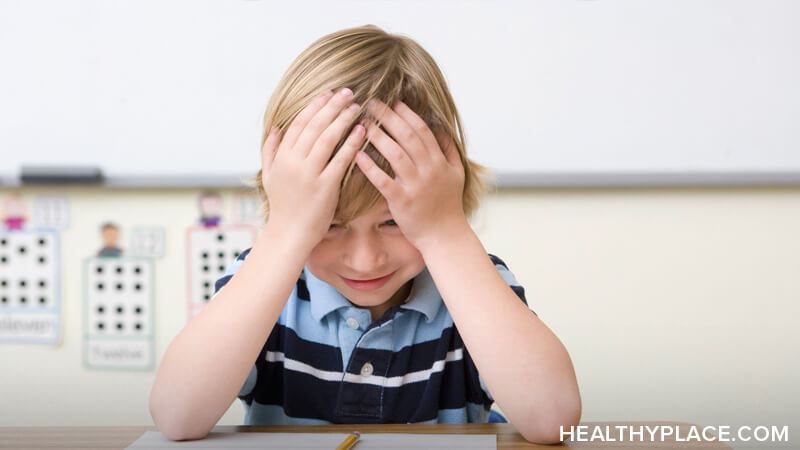Least Restrictive Environment: Including Special Needs Kids
 The definition of the least restrictive environment is part of the Individuals with Disabilities Education Act (IDEA). It mandates that children with disabilities should learn alongside their regular education peers as much as is safe and possible. Why is it so important that our children with mental illnesses be included in the least restricted environment?
The definition of the least restrictive environment is part of the Individuals with Disabilities Education Act (IDEA). It mandates that children with disabilities should learn alongside their regular education peers as much as is safe and possible. Why is it so important that our children with mental illnesses be included in the least restricted environment?
What Is the Least Restrictive Environment?
The least restrictive environment is a need for many children with mental illnesses. My son has attention-deficit/hyperactivity disorder (ADHD) and disruptive mood dysregulation disorder (DMDD). He started kindergarten in a regular education classroom but staff kept removing him for disruptive and unsafe behaviors. He was otherwise learning and testing well, so at that point, "special education" meant providing accommodations in the regular classroom. He got more movement time to manage hyperactivity or fidgets to help him focus. His environment wasn't restricted.
Unfortunately, this wasn't enough. He turned in less work each year. He'd lose homework either to or from school. He'd submit incomplete work. He'd become so dysregulated in class, he'd get suspended. His test scores plummeted because he couldn't focus or was removed due to outbursts.
He still spent the majority of time in his regular education classroom but the school began pull-out classes for social-emotional learning. He had twice daily sensory breaks to decrease overstimulation. This was his new least restrictive environment.
The Stigma of the Least Restrictive Environment
Pull-out classes didn't decrease my son's violent outbursts. When he and other children were no longer safe, he went into a specialized emotional/behavioral disorder (EBD) classroom where they could handle the outbursts. Now, his least restrictive environment included plenty of restrictions, but he thrived.
It was the best thing that happened to us, but special education can also isolate and stigmatize children. Those of us who grew up in a typical classroom probably remember "those kids" when we were growing up. We didn't see them in our classrooms. We didn't see them in the halls. They weren't like us, we thought.
This stigma prevented me from seeking a specialized classroom earlier. I didn't want my son losing his regular education friends. I didn't want him looked at as the "bad kid." I didn't want him to show up to middle school, where he'd be more mainstreamed, and have no connections because he was isolated and "different."
Including Children with Mental Illness
Luckily, my son had a great teacher who understood that "least restrictive" did not mean "less included." He pushed for things that our school hadn't considered before, like allowing his kids to go on field trips with their regular education peers. He had to help administrators overcome their fears that children with mental health disorders couldn't manage in the outside world.
As a parent, it's painful to see the subtle ways your child with mental illness gets excluded. In May, our school had graduation programming for fifth graders. It included a science fair where kids demonstrated their work to their parents. I showed up, excited, and asked the principal where I could see my son's project. Her look of surprise made it clear that not only had the EBD classroom not been included, but she hadn't considered parents might show up to see their children take part.
Recently, I learned that he was also excluded from a day in which fifth-graders learned about middle school classes and ranked the electives they wanted to take. This was heartbreaking. What about my child's mental illness meant he couldn't take part in a science fair? What prevents him from makes choices about middle school electives? Even if he can't take regular classes, being part of the excitement other fifth graders shared that day would have been fun for him and normalizing.
It may seem inconsequential to educators but the moral of the story is this: it's not inconsequential to children with mental illness and their parents. If our kids can't be included due to restrictions, that's fine. Let us know. The part that hurts most is not that they can't always take part, it's that they weren't thought about at all.
What's your experience with your children and least restrictive environments?
APA Reference
David, M.
(2018, July 16). Least Restrictive Environment: Including Special Needs Kids, HealthyPlace. Retrieved
on 2026, January 1 from https://www.healthyplace.com/blogs/parentingchildwithmentalillness/2018/7/least-restrictive-environment-including-special-needs-kids